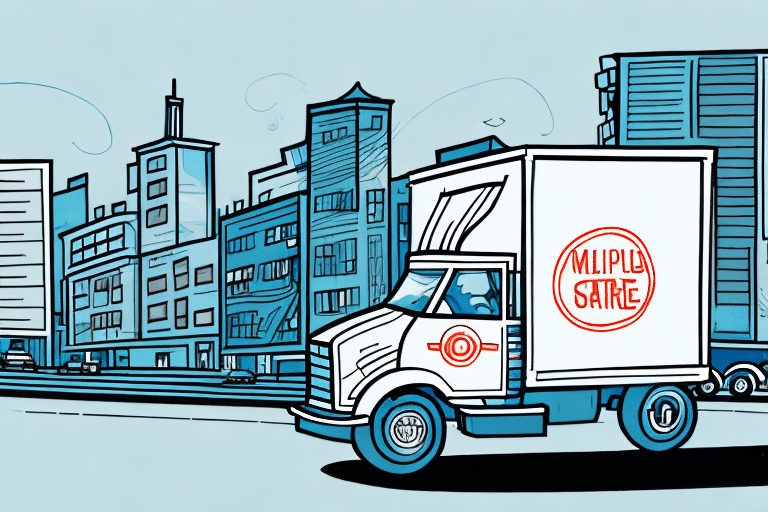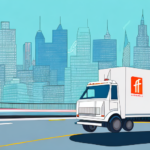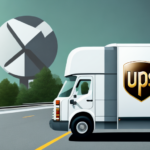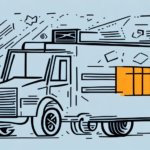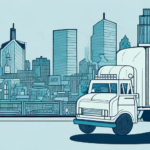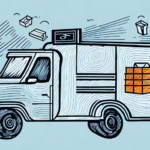Understanding Last Mile Delivery
Last mile delivery has become a critical component of the e-commerce industry, enhancing the efficiency and convenience of the delivery process for customers. It involves transporting packages from the nearest transportation hub to the final destination, typically the customer's home or office. As e-commerce continues to grow, optimizing last mile delivery is essential for businesses to stay competitive and meet customer expectations.
The Importance of Last Mile Delivery for E-commerce Businesses
The success of an e-commerce business heavily relies on the effectiveness of its last mile delivery. A seamless delivery process not only enhances the customer experience but also fosters brand loyalty. Conversely, inefficiencies in last mile delivery can lead to dissatisfied customers, negative reviews, and loss of business.
- Customer Satisfaction: Timely and accurate deliveries improve customer satisfaction and encourage repeat business.
- Brand Reputation: Reliable delivery services enhance a company's reputation and trustworthiness.
- Operational Efficiency: Optimized delivery routes and processes reduce costs and increase profitability.
Implementing technologies such as GPS tracking and route optimization software can significantly improve the efficiency of last mile delivery. Additionally, leveraging data analytics helps businesses understand customer behavior and preferences, allowing for tailored delivery services.
The Evolution of Last Mile Delivery: From Traditional Methods to Modern Technology
Last mile delivery has evolved from traditional methods like bicycles, motorcycles, and vans to incorporate advanced technologies. Innovations such as GPS tracking, real-time package tracking, and route optimization algorithms have revolutionized the delivery process, making it more efficient and reliable.
Moreover, there is a growing shift towards sustainable and eco-friendly delivery methods. Companies are experimenting with electric vehicles and drones to reduce carbon emissions and improve delivery times. According to a 2023 report by the International Energy Agency, the adoption of electric delivery vehicles has the potential to significantly lower greenhouse gas emissions in the logistics sector.
Common Challenges in Last Mile Delivery and Solutions
Despite advancements, last mile delivery faces several challenges, including:
- Traffic Congestion: Urban areas often experience heavy traffic, delaying deliveries.
- Fuel Costs: Rising fuel prices increase operational expenses.
- Package Theft: Security concerns can lead to lost or stolen packages.
- Missed Deliveries: Incorrect addresses or recipients unavailable can result in failed deliveries.
To address these issues, businesses are adopting innovative solutions such as:
- Delivery Lockers: Providing secure locations for package pick-up reduces theft and missed deliveries.
- Drone Deliveries: Utilizing drones can bypass traffic congestion and expedite deliveries.
- Local Partnerships: Collaborating with local delivery companies can optimize delivery routes and reduce costs.
Investing in advanced GPS systems and detailed mapping technologies ensures accurate and timely deliveries, even in challenging locations.
The Impact of COVID-19 on Last Mile Delivery and the Rise of Contactless Deliveries
The COVID-19 pandemic has significantly transformed last mile delivery practices. With the surge in online shopping and the necessity for contactless interactions, businesses have had to adapt rapidly.
- Increased Demand: There was a substantial rise in demand for same-day and next-day deliveries as consumers sought quick and reliable services while minimizing physical contact.
- Safety Protocols: Implementation of contactless delivery methods became essential to ensure the safety of both customers and delivery personnel.
According to a McKinsey & Company report, the pandemic accelerated the adoption of technologies like drones and autonomous vehicles to enhance delivery capabilities and meet the increased demand.
The Role of Artificial Intelligence in Optimizing Last Mile Delivery
Artificial Intelligence (AI) plays a pivotal role in revolutionizing last mile delivery. By leveraging AI, businesses can:
- Optimize Delivery Routes: AI algorithms analyze traffic patterns, weather conditions, and delivery windows to determine the most efficient routes.
- Predict Delivery Times: Predictive analytics estimate accurate delivery times, enhancing customer satisfaction.
- Personalize Delivery Experiences: AI can tailor delivery options based on customer preferences and behavior.
Furthermore, AI-powered delivery robots and drones are becoming increasingly prevalent, offering faster and more efficient delivery solutions. A study by Forbes highlights that AI integration can reduce delivery costs by up to 30% while improving delivery speeds.
AI also contributes to sustainability by optimizing delivery routes, thereby reducing the number of vehicles on the road and lowering carbon emissions.
Sustainable Last Mile Delivery: Reducing Carbon Footprint and Increasing Efficiency
The environmental impact of last mile delivery is a growing concern, with delivery vehicles contributing significantly to carbon emissions. To mitigate this, businesses are adopting sustainable practices:
- Electric Vehicles (EVs): Transitioning to EVs reduces greenhouse gas emissions and lowers fuel costs.
- Bicycle Deliveries: In urban areas, using bicycles for deliveries can decrease traffic congestion and emissions.
- Efficient Route Planning: Optimizing delivery routes minimizes fuel consumption and vehicle usage.
Investing in EVs not only benefits the environment but also enhances a company's sustainability credentials. According to the U.S. Department of Energy, electric delivery vehicles can reduce carbon emissions by up to 50% compared to traditional gasoline-powered vehicles.
Additionally, sustainable practices can lead to cost savings through reduced fuel and maintenance expenses. Businesses that prioritize sustainability are also more likely to attract environmentally conscious consumers, enhancing their market position.
Innovative Solutions for Improving Last Mile Delivery: Drones and Autonomous Vehicles
Innovations such as drones and autonomous vehicles are transforming last mile delivery by enhancing speed and efficiency:
- Drones: Drones can bypass traffic and reach remote areas quickly, making deliveries faster and more reliable.
- Autonomous Vehicles: Self-driving delivery vehicles can operate around the clock, optimizing routes and reducing labor costs.
However, the adoption of these technologies requires significant investment and adherence to regulatory standards. Businesses must ensure compliance with local laws and safety regulations to successfully implement drone and autonomous vehicle deliveries.
According to a Forbes article, autonomous vehicles have the potential to decrease delivery times by up to 40%, while drones can reduce delivery costs by approximately 20%.
Collaborative Logistics: The Future of Last Mile Delivery
Collaborative logistics involves multiple businesses and transport providers working together to optimize the delivery process. This approach offers several benefits:
- Cost Reduction: Sharing delivery resources and routes can lower transportation costs for all parties involved.
- Environmental Benefits: Collaborative efforts can reduce the number of vehicles on the road, decreasing carbon emissions.
- Increased Efficiency: Combining deliveries can streamline operations and improve delivery speeds.
In densely populated urban areas, collaborative logistics can significantly enhance delivery efficiency by minimizing redundant trips and maximizing resource utilization. A study published in the Journal of Transport Logistics suggests that collaborative logistics can reduce delivery costs by up to 25% while also contributing to environmental sustainability.
Best Practices for Effective Last Mile Delivery Management
Effective management of last mile delivery is crucial for ensuring timely and accurate deliveries. Key best practices include:
- Real-Time Tracking: Implementing real-time package tracking systems enhances visibility and allows for proactive issue resolution.
- Optimized Route Planning: Utilizing route optimization software to determine the most efficient delivery paths.
- Proactive Communication: Keeping customers informed throughout the delivery process improves satisfaction and reduces uncertainty.
Additionally, training delivery personnel to handle packages with care and equipping them with the necessary tools and resources ensures a high-quality delivery experience. Adopting these best practices can lead to increased operational efficiency and customer loyalty.
The Cost Factor in Last Mile Delivery and Strategies to Reduce It
Last mile delivery is often the most expensive part of the shipping process, accounting for up to 53% of total delivery costs. To manage and reduce these costs, businesses can implement several strategies:
- Efficient Vehicle Utilization: Using multi-purpose and fuel-efficient vehicles can lower operational costs.
- Route Optimization: Reducing mileage through optimized routing decreases fuel consumption and labor costs.
- Technological Investments: Investing in automated systems and AI-driven solutions can enhance efficiency and reduce manual labor expenses.
- Partnering with Local Providers: Collaborating with local delivery services can minimize transportation costs in specific regions.
Adopting these strategies not only reduces costs but also improves delivery speed and reliability, enhancing overall business performance.
The Impact of Customer Experience on the Success of Last Mile Delivery
The last mile delivery experience plays a pivotal role in shaping customer satisfaction and loyalty. Key factors influencing customer experience include:
- Timeliness: Ensuring deliveries arrive within the promised time frame is essential for customer satisfaction.
- Communication: Providing continuous updates and clear communication throughout the delivery process builds trust.
- Package Condition: Delivering packages in good condition reflects positively on the business and encourages repeat purchases.
Investing in technologies that enhance transparency and reliability, such as real-time tracking and automated notifications, can significantly improve the customer experience. A Qualtrics report indicates that 78% of consumers consider reliable delivery a key factor in their purchasing decisions.
The Future of Last Mile Delivery: Predictions and Trends
The last mile delivery landscape is continually evolving, driven by technological advancements and changing consumer expectations. Emerging trends to watch include:
- Autonomous Delivery Vehicles: Continued development of self-driving delivery vans and robots.
- Drone Deliveries: Expansion of drone delivery services to more regions and sectors.
- Green Delivery Solutions: Increased adoption of electric and hybrid vehicles to promote sustainability.
- Personalized Delivery Options: Offering flexible delivery windows and customized delivery experiences based on individual preferences.
These trends are expected to enhance efficiency, reduce costs, and improve the overall delivery experience for customers. Staying abreast of these developments will be crucial for businesses aiming to maintain a competitive edge in the e-commerce market.
Case Studies: Success Stories in Last Mile Delivery
Several companies have excelled in optimizing their last mile delivery processes, setting benchmarks for the industry:
- Amazon: Pioneered the use of Amazon Prime Air, leveraging drones and autonomous vehicles to expedite deliveries.
- UPS: Implemented advanced route optimization software, reducing fuel consumption and improving delivery times.
- DHL: Adopted electric delivery vans and experimented with drone deliveries to enhance sustainability and efficiency.
These success stories demonstrate the importance of innovation and strategic investments in technology to achieve excellence in last mile delivery.
Legalities Involved in Last Mile Delivery
Last mile delivery operations are subject to a range of laws and regulations that businesses must adhere to:
- Permit Requirements: Obtaining necessary permits for operating delivery vehicles and drones.
- Traffic Laws: Complying with local traffic regulations to avoid fines and penalties.
- Safety Regulations: Ensuring delivery personnel and operations meet safety standards to prevent accidents and injuries.
Non-compliance with these legal requirements can result in significant fines and legal actions, underscoring the importance of understanding and adhering to relevant laws. Businesses should consult legal experts and stay informed about regulatory changes to ensure their delivery operations remain compliant.
Conclusion
Optimizing last mile delivery is crucial for the success of e-commerce businesses. By investing in innovative technologies, adopting sustainable practices, and adhering to best practices in delivery management, companies can enhance efficiency, reduce costs, and improve customer satisfaction. As the industry continues to evolve, staying informed about emerging trends and legal requirements will be essential for maintaining a competitive edge and delivering exceptional service to customers.















